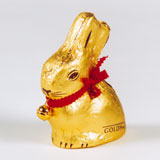Easter

The Easter Fire and Easter candles also form part of the Easter festival. They symbolise Jesus Christ’s resurrection and triumph over the darkness of death and sin. Pagan and mythical motifs live on in many of the popular spring customs that take place at Easter, and which were later filled with Christian symbolism. Two central symbols are the Easter egg and the Easter bunny. According to age-old beliefs, eggs are considered to be the origin of life. The hare is the symbol of fertility. The tradition of painting Easter eggs in bright colours goes back hundreds of years. On Easter Sunday, parents hide the painted Easter eggs, chocolate bunnies and other sweets in their gardens or apartments for the children to hunt and find.
In his poem "Der Osterspaziergang" ("Easter Stroll") Germany’s most famous poet, Johann Wolfgang von Goethe, describes the end of winter and the beginning of spring.
Vom Eise befreit sind Strom und Bäche
Durch des Frühlings holden, belebenden Blick,
Im Tale grünet Hoffnungsglück;
Der alte Winter, in seiner Schwäche,
Zog sich in rauhe Berge zurück.
(…)
Jeder sonnt sich heute so gern.
Sie feiern die Auferstehung des Herrn,
Denn sie sind selber auferstanden.
(…)
Selbst von des Berges fernen Pfaden
Blinken uns farbige Kleider an.
Ich höre schon des Dorfs Getümmel,
Hier ist des Volkes wahrer Himmel,
Zufrieden jauchzet groß und klein:
Hier bin ich Mensch, hier darf ichs sein!
The Easter Marches are a protest movement of the peace lobby. The first Easter March in Germany took place in 1960. Pacifists organise protest marches against war and military proliferation during the Easter holiday period.
